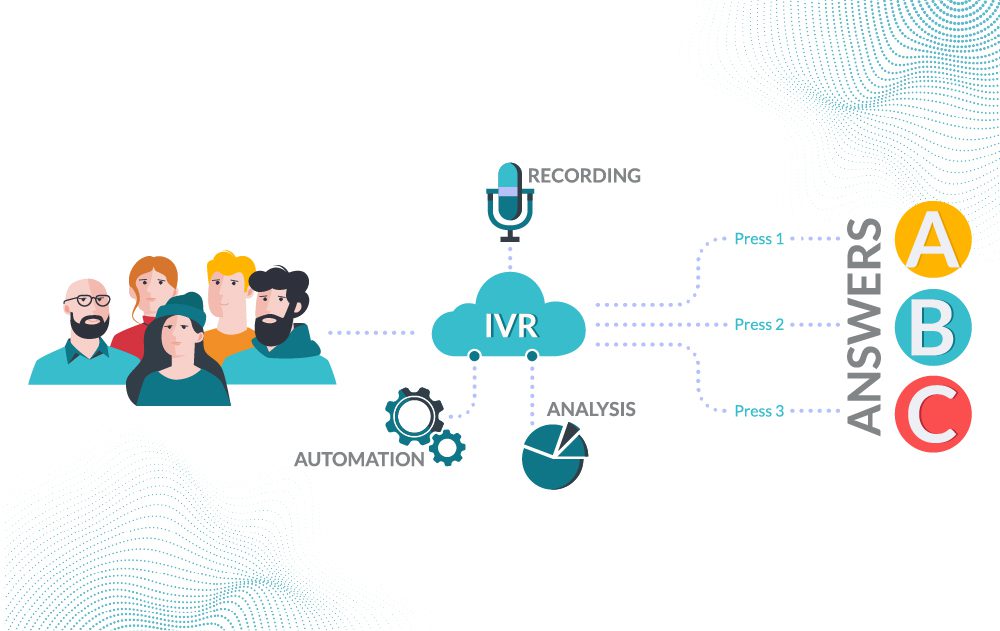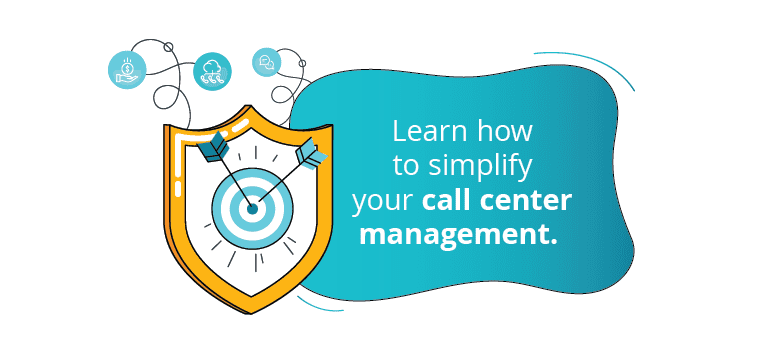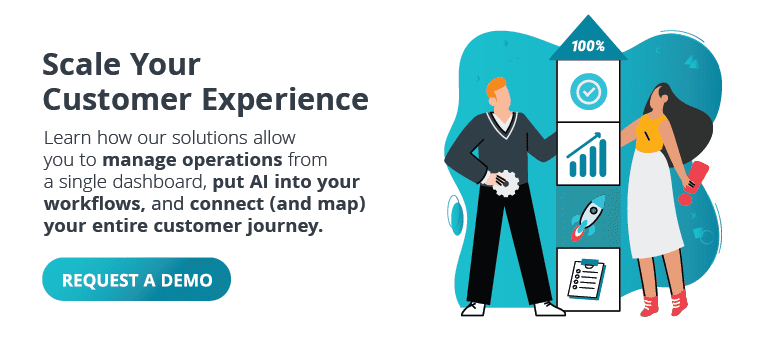Fast, direct, and effective customer service interactions are the markers of a standout customer experience. In one study, over 33% of customers said waiting on hold frustrates them. And getting hot potato-ed from one department to another only adds to that irritation. When too many negative experiences pile up, you’ve got a serious mess on your hands — customers churning, bad reviews, and revenue spiraling down the drain.
Avoid that mess and streamline your call center management with an interactive voice response (IVR) system.
IVR systems collect key information from your customers using voice and keypad inputs. With that information, the system then routes them to the best possible help. The process looks something like this:
- A customer calls your service team.
- The IVR systems greet the customer, offering some options (i.e., which department they need, what issues they’re facing, etc.).
- The customer, either via their voice or through the keypad, chooses the option that best meets their need.
- The IVR then routes them to the best agent or, with AI, answers their question.
It sounds simple enough. But let’s see some IVR systems in action. Here are seven ways to use IVR systems to help manage your call center.
7 Ways You Can Use IVR Systems to Help Manage Your Call Center
1. Use Skills-Based Routing to Empower Agents (and Deliver Fast Service)
Don’t sleep on the unique skills your agents bring to the table. With skills-based routing, IVR systems can route customers to agents with the most relevant skills for handling their concerns.
Let’s say your agent, Rebekah, is a pro at data analytics. She knows how to dig through and interpret a report faster than anyone else on your team. With skills-based routing, you can send customers with data or reporting questions directly to Rebekah. Imagine the impact. They get help faster and avoid getting transferred, and Rebekah gets to do what she’s best at.
With a skills-based call routing strategy, you can empower agents to lean into their strengths, optimizing their time and effort. And, by sending customers to the agent best suited to meet their needs, you deliver fast, personalized service.
2. Boost Your Self-Service Game
Think back to your craziest day in the call center. Phones are ringing incessantly. Your inbox is swamped with emails. You can barely catch a breath. And on that day, how often did you hear agents repeating themselves and answering the same questions over and over? By improving self-service through IVR systems and intelligent virtual assistants (IVAs), you can say goodbye to that annoying repetition and let customers help themselves.
Adding AI-powered virtual assistants to your IVR systems can provide help without human intervention. Natural language voice bots can respond to customer needs and tackle basic customer requests and questions, like order status and pre-programmed FAQs. Then, when things get a bit more complex, your IVA can route the customer to a human agent for more personalized care.
3. Triage Crisis Moments
Imagine this: the product team releases a new feature, and it causes the platform to crash. Repeatedly. Of course, this outage throws your customers into a panic. Your call center is suddenly swamped with calls. How do you manage it and ensure the most important issues get help fast?
IVR systems help you triage incoming calls. With intelligent routing and automation, IVRs can prioritize calls from the most high-value or loyal customers. Or it can gather basic customer information to help move the most critical issues to the top of the call queue, guaranteeing help for customers who need it first.
4. Streamline Workflows
Call center agents are often bogged down with high call volumes on top of their daily tasks (and we wonder why they’re notoriously burnt out!). With IVR systems, though, you can automate and streamline your workflows, relieving agents of calls and moving customers to fast resolutions.
Let me show you a few examples.
- IVR systems can send callers to voicemail or prompt them to request a callback when there are long wait times. This reduces call volume and lets customers go on with their day.
- IVRs can route calls to a specific number or department when an issue requires specialized knowledge.
- IVRs can offer customers a text-back option. With SMS channels, calls can be moved to a text message thread, reducing call volumes and allowing customers and agents to resolve issues with more flexibility.
- IVR systems can answer FAQs. You can create IVR scripts that answer frequently asked questions with pre-recorded messages and solutions. Another option is to add IVAs to assist customers.
Get IVR script examples here.
5. Gather Customer Insights
According to McKinsey & Company, organizations that take advantage of customer insights outperform their peers by 85% in sales growth and by more than 25% in gross margins. Knowing your customers’ preferences, pain points, and satisfaction levels empowers you to deliver a better customer experience and gain a competitive advantage. IVR systems can help.
Use IVR to deliver post-call surveys, share feedback prompts, and gather customer sentiment with sentiment analytics. An IVR or IVA can collect key customer demographics at the start of every call. Then, you can use that data to track trends, empathize with customers, and create a more personalized CX.
6. Improve Employee Morale
Are your employees happy? Call center attrition and turnover rates are some of the highest out there, and it’s not surprising why. The job is tough. Agents deal with grumpy customers all day, handle repetitive tasks, and are often severely underappreciated. Want to help your employee morale? Add IVR systems.
An IVR system can reduce the repetitive tasks and questions agents encounter throughout the day, nixing the onslaught of incoming calls and improving self-service. When they’re less overwhelmed by an endless queue of customers, agents gain space in their day to breathe, connect with one another, and invest in their professional development. And, because IVRs route customers to the best agents, you set your team up for success in their interactions. The result? Happier agents (and more satisfied customers).
7. Enhance First Contact Resolution and Performance Metrics
Studies show that for every 1% increase in FCR, there’s a 1% increase in customer satisfaction (CSAT) scores. And satisfied customers equal more revenue. Your performance metrics, like your FCR rate, help your executive team see the impact you have on the company’s bottom line. That performance data drives strategic decisions, hiring, budgets, and more. So, even though they’re just numbers on a screen, they really matter!
IVR systems enhance your metrics across the board by accurately routing calls to the most appropriate agent and providing self-service options that address customer queries upfront. With this, you can resolve issues with one interaction, which supports a higher FCR. This helps your customer satisfaction score and impacts other KPIs, like average handling time and customer retention rates.










